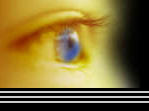|
Thomas Gainsborough,
the son of a schoolteacher, was born in Sudbury in 1727. When he was 13, he persuaded his father to send him to London to study on the strength
of his promise at landscape. He worked as an assistant to Hubert Gravelot, a French painter and engraver and an important figure in London art circles
at the time. From him Gainsborough learned something of the French Rococo idiom, which had a considerable influence on the development of his style.
In 1745 Gainsborough married Margaret Burr, the daughter of the
Duke of Beaufort, and established himself as a painter at Ipswich. He developed
the subject matter of small portrait groups, set in a realistic landscape. His most famous painting of this period is “Mr and Mrs Andrews” (1748).
To obtain a wider public, Gainsborough moved in 1759 to Bath, where his studio was soon thronged
with fashionable sitters. He moved in musical and theatrical circles, and among his friends were members of the Linley family,
whose portraits he painted. At Bath he also met the actor David Garrick, for whom he had a profound admiration and whom
he painted on many occasions. His passion for music and the stage continued throughout his life. In the west country he visited
many of the great houses and at Wilton fell under the spell of Anthony Van Dyck, the predominating influence in his later
work. In spite of the demand for portraits, he continued to paint landscapes.
In 1774 Gainsborough moved to London where he became a foundation member of the Royal Academy. However, had several disagreements with the Academy about the selection of his paintings. By the 1780s
Gainsborough and his rivals, Joshua Reynolds and Allan Ramsay, were considered to be the best portrait painters in England. All three painted George III but it was claimed that the royal family preferred Gainsborough's portraits. Thomas Gainsborough died in 1788.
Of
all the 18th-century English painters, Thomas Gainsborough was the most inventive and original, always prepared to experiment
with new ideas and techniques, and yet he complained of his contemporary Sir Joshua Reynolds, Damn him, how various he is.
Gainsborough alone among the great portrait painters of the era also devoted serious attention to landscapes. Unlike Reynolds,
he was no great believer in an academic tradition and laughed at the fashion for history painting; an instinctive painter,
he delighted in the poetry of paint. In his racy letters Gainsborough shows a warm-hearted and generous character and an independent
mind. His comments on his own work and methods, as well as on some of the old masters, are very revealing and throw considerable
light on contemporary views of art.
Formal Analasis:
1748-49 Oil
on canvas, 70 x 119 cm,
National
Gallery, London
Subject: Personal Function, self portrait
Subject Matter: Mr. and Mrs. Andrews on their farm near Sudbury
Form: 1748-49
Oil on canvas, 70 x 119 cm, National Gallery, London. The church in the background is St Peter's, Sudbury, and the tower to the left is that of Lavenham
church. The small full-length portrait in an open-air rustic setting is typical of Gainsborough's early works, painted in
his native Suffolk after his return from London; the identifiable view is unusual, and may have been specified by the patrons.
Content:
The landscape evokes Robert Andrew's estate, to which his marriage added property. He has a gun under his arm, while his wife
sits on an elaborate wooden bench. The painting of Mrs. Andrews' lap is unfinished. The space may have been reserved for a
child for Mrs. Andrews to hold. We must not imagine that they sat together under a tree while Gainsborough set up his easel
among the sheaves of corn; their costumes were most likely painted from dressed-up artist's mannequins, which may account
for their doll-like appearance, and the landscape would have been studied separately.
Art 102
|

